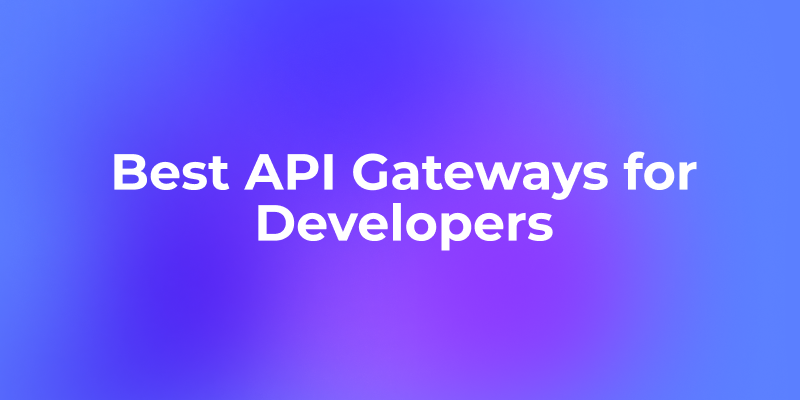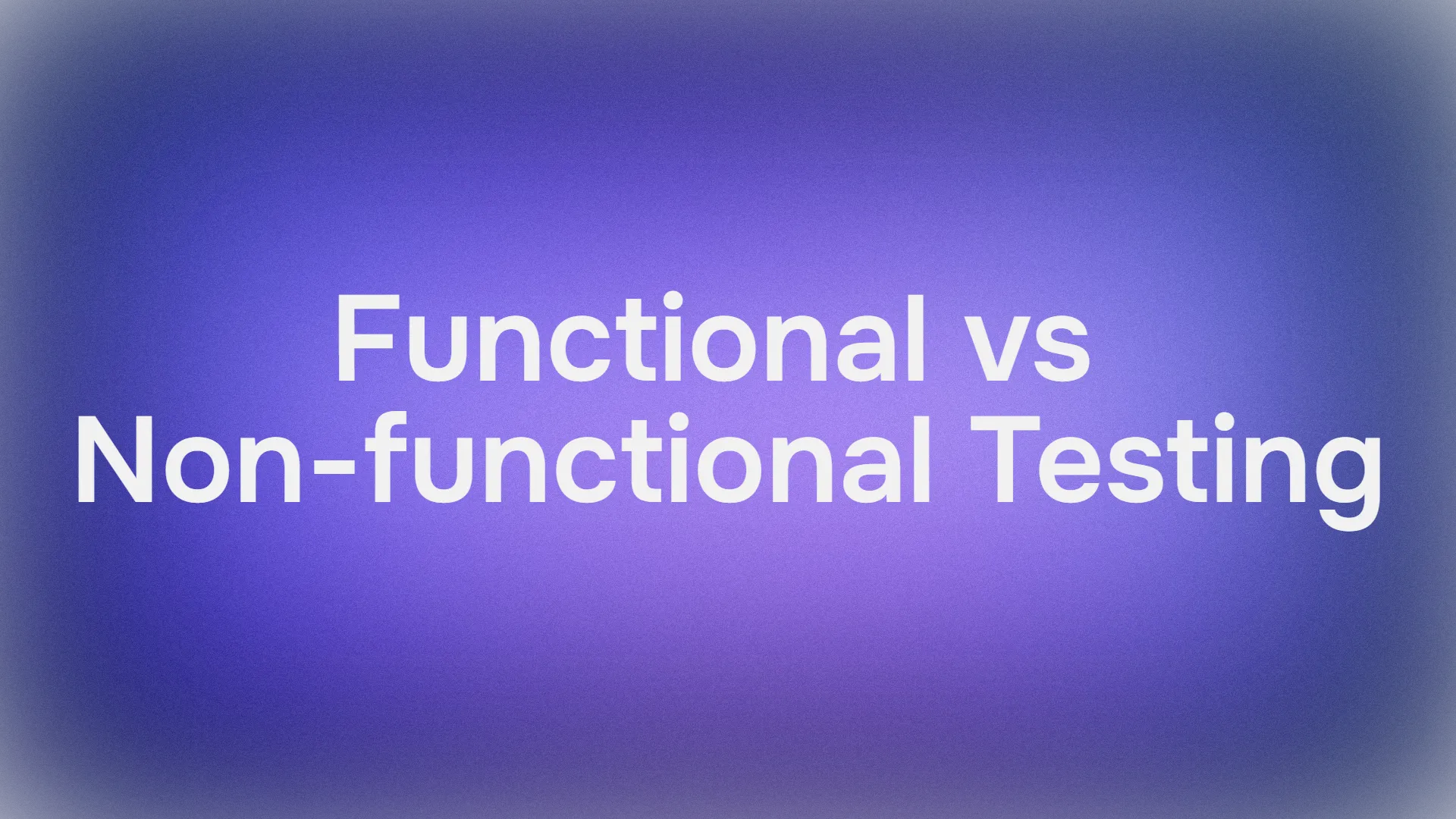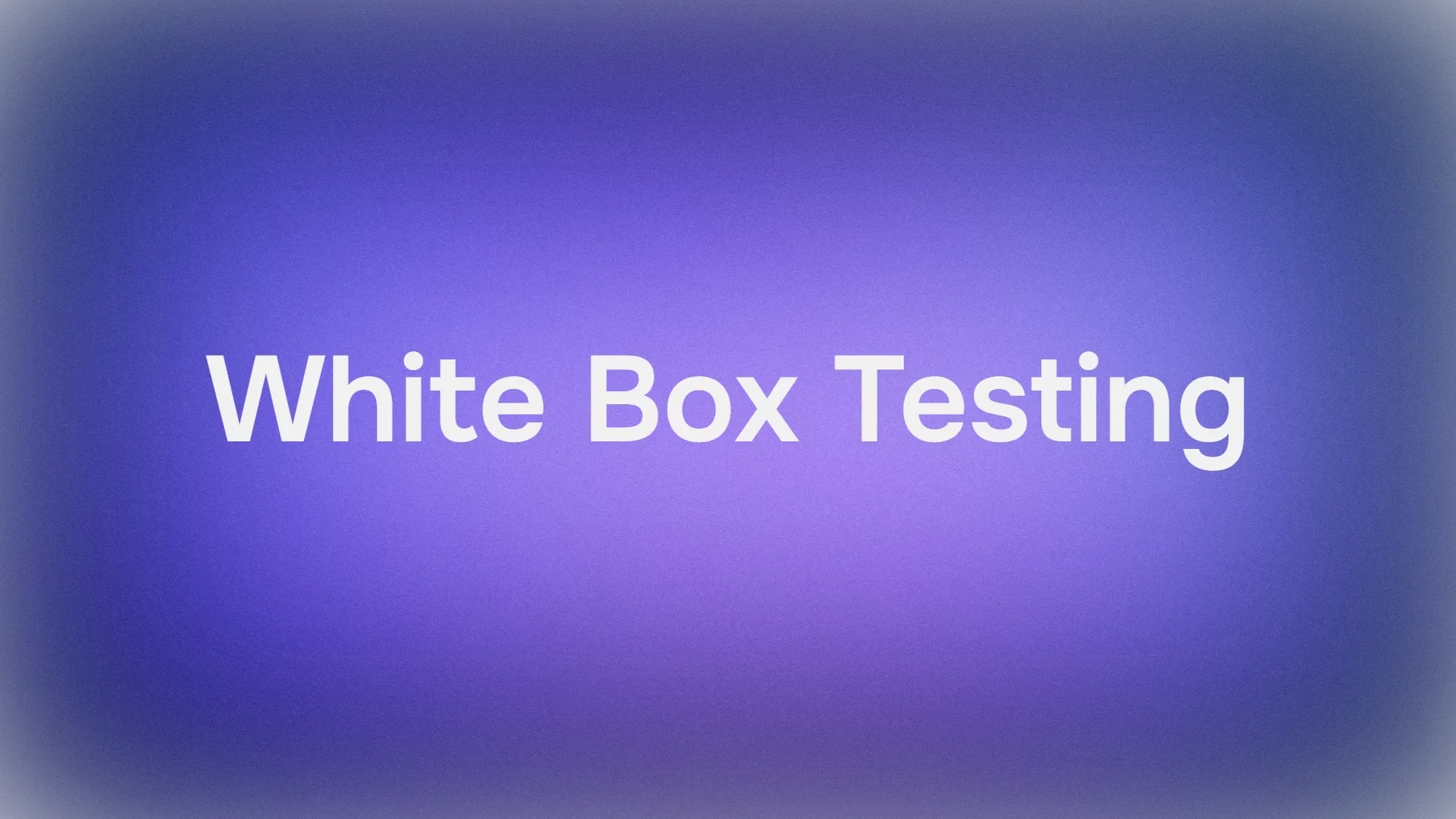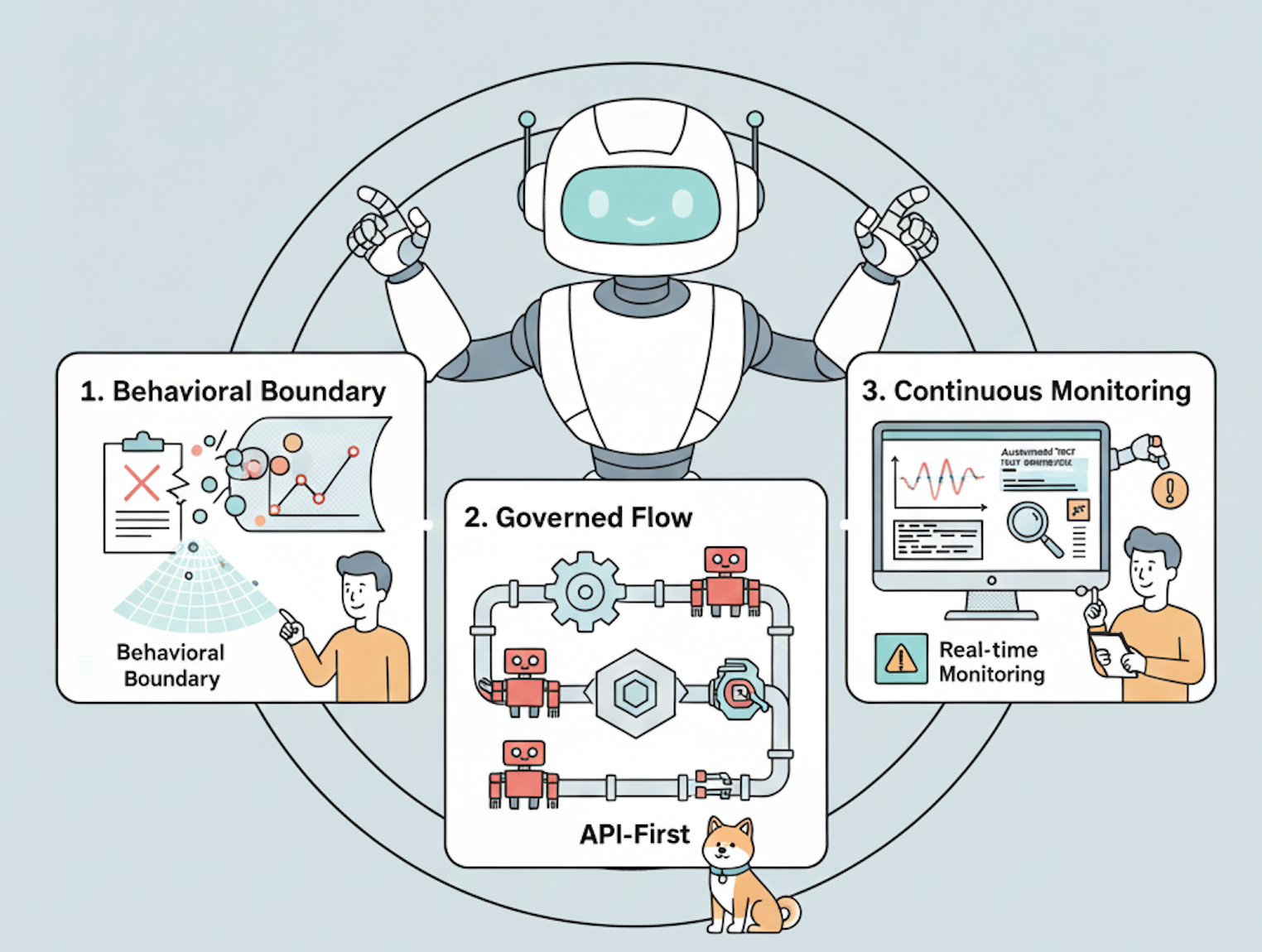Let’s be honest: if you’re building, scaling or securing modern applications, you simply can’t avoid the need for a robust API gateway. I’ve hit every roadblock you can imagine: API sprawl, security headaches, throttling nightmares, and the ever-growing need to connect, secure and optimize everything. That’s where API gateways swoop in, acting as the "traffic cop" for your backend services.
But as you’ll see, not all gateways are created equal and what works for one company, team or project may be a total mismatch for another. So as we count down my picks for the top 10 best API gateways of 2025, I’ll also share how to actually leverage these tools in real projects.
What is an API Gateway?
An API gateway is software that acts as the single entry point for clients to access backend services in your application. Think of it as your project’s hyper intelligent receptionist directing calls, enforcing security, logging requests, managing load, and translating protocols. For complex systems (think microservices, AI-based APIs, mobile apps), an API gateway is the glue that prevents chaos and downtime.
Core Functionalities of API Gateway:
- Unified entry point: Shields your internal services from direct exposure.
- Routing and transformation: Sends calls to the right service and converts data as needed.
- Security policies: Handles authentication, rate limiting, threat detection, and more.
- Centralized monitoring and analytics: Know exactly what’s happening.
After years of working with all kinds of backends—sometimes with a few headaches—these API gateway platforms have consistently delivered. Whether you're looking for open-source flexibility, enterprise-level performance, or seamless integration, there's a solution for you.
In this guide, I’ll not only highlight what makes each API gateway stand out, but also show you how to use them, how to make a smooth transition, and help you choose the one that best fits your needs.
1. Apache APISIX
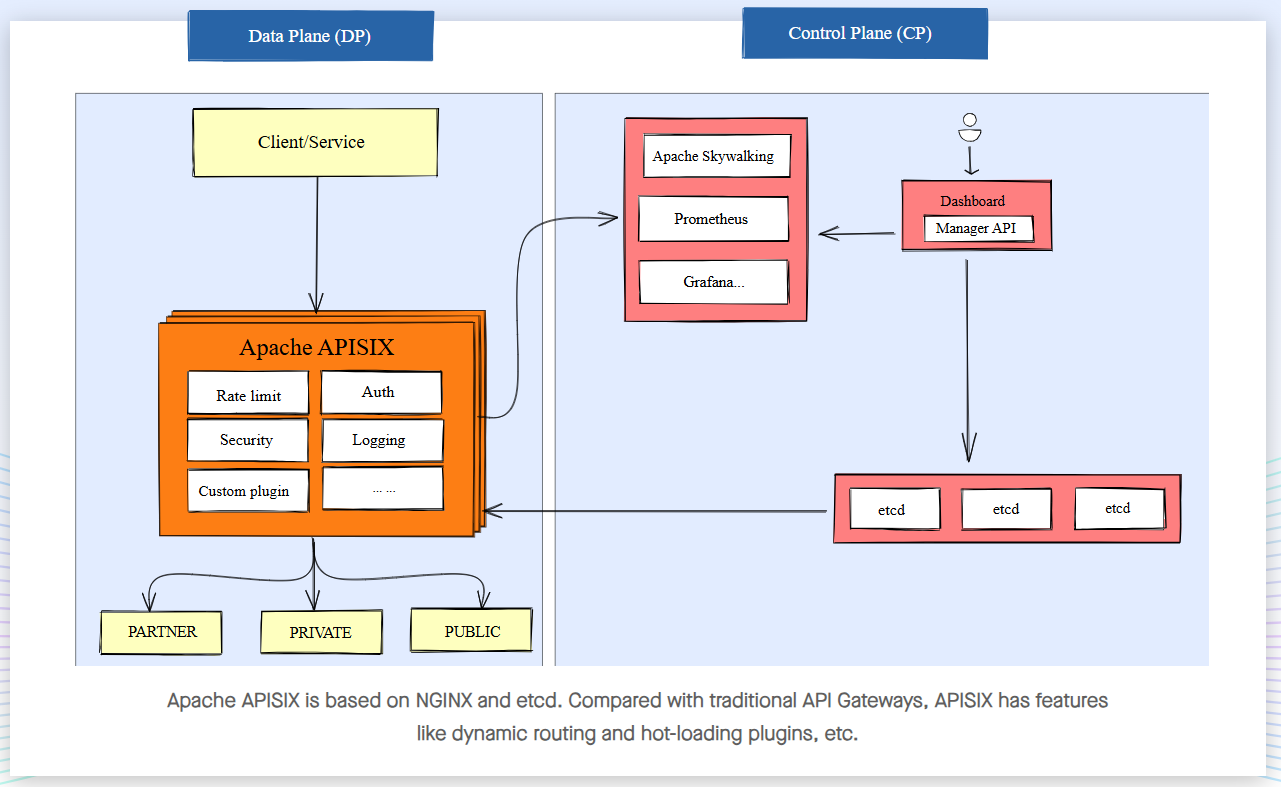
Apache APISIX is an open-source, cloud-native API gateway and AI gateway. It functions as a high-performance, real-time, and dynamic platform for managing API traffic and enabling AI-driven applications.
Key characteristics and functionalities of Apache APISIX include:
- API Gateway: It acts as a single entry point for API requests into a system, managing and routing traffic to various backend services, including microservices.
- AI Gateway: It supports integration with multiple Large Language Models (LLMs) like OpenAI, DeepSeek, and Gemini, enabling the development and deployment of AI applications.
- High Performance: Designed for cloud-native environments, it offers low latency and high throughput for efficient API management.
- Dynamic Configuration: It supports hot reloading and dynamic updates of configurations and plugins without requiring service restarts.
- Rich Traffic Management Features: It provides capabilities such as load balancing, dynamic upstream, canary release, circuit breaking, rate limiting, authentication, and observability.
- Extensibility:Its modular architecture allows users to extend its functionality through custom plugins, making it adaptable to diverse use cases.
- Cloud-Native Design:It is built for modern cloud and containerized environments, including integration with Kubernetes as an ingress controller.
- Configuration Storage:It utilizes etcd for efficient and robust distributed configuration management, ensuring consistency and availability.
Best for:
- API Gateways: Managing and routing API traffic, applying policies like authentication, rate limiting, and caching.
- Kubernetes Ingress: Acting as an Ingress controller within Kubernetes to manage external access to services.
- Service Mesh: Handling east-west traffic between microservices within a service mesh.
- AI Gateway: Specialized features for managing traffic in AI applications.
Pros:
- High Performance: Designed for low latency and high throughput, handling a large number of requests per second.
- Dynamic Configuration: Allows real-time changes to routes, plugins, and other configurations without service interruption.
- Extensive Plugin Ecosystem: Offers a wide range of built-in plugins for various functionalities like security, traffic management, and observability.
- Multi-protocol Support: Supports various protocols including HTTP(s), TCP, UDP, gRPC, WebSocket, and Apache Dubbo.
- Open Source: Provides flexibility and community support.
- Kubernetes-Native: Integrates well with Kubernetes environments.
Cons:
- Documentation: While improving, some users report that documentation can be challenging to navigate or incomplete for specific use cases.
- Maturity: As a relatively newer project compared to some established API gateways, it might not have the same breadth of features or long-term community support as more mature alternatives, although it is rapidly gaining traction.
2. Kong Gateway

Kong Gateway is a cloud-native, high-performance, and highly customizable API gateway and microservices management layer built on top of NGINX. It acts as a central entry point for your APIs, handling traffic management, security, and observability for your microservices. It's designed for flexibility, scalability, and ease of use, especially in decentralized and cloud-native environments.
Key Features:
- High Performance & Scalability: Built on NGINX, Kong is known for its speed and ability to handle high traffic loads.
- Plugin Architecture: Kong's functionality can be extended through a vast library of plugins for security, rate limiting, transformations, and more.
- Multi-Protocol Support: Kong supports various protocols like HTTP/HTTPS, gRPC, and TCP, making it versatile for different applications.
- Flexible Deployment: Can be deployed as a traditional server or as a lightweight container, making it adaptable to various infrastructure setups.
- Comprehensive API Analytics: Provides insights into API usage, performance, and errors, enabling data-driven decision-making.
- Security Features: Offers robust security features like OAuth 2.0 authentication, SSL termination, and rate limiting.
- Load Balancing: Distributes traffic across multiple service instances to ensure high availability and performance.
- Hybrid and Multi-Cloud Deployments: Designed to work effectively in decentralized architectures like hybrid-cloud and multi-cloud environments.
Best For:
- Microservices Architecture: Kong is well-suited for managing APIs in a microservices environment, providing a central point of control.
- Cloud-Native Applications: Its lightweight nature and containerization support make it ideal for cloud-native deployments.
- Large-Scale API Management: Kong's scalability and performance capabilities make it suitable for managing a high volume of API traffic.
- Organizations looking to extend API functionality: The plugin architecture allows for easy customization and integration with other tools.
Pros:
- High Performance and Scalability: Designed to handle high traffic loads efficiently.
- Extensive Plugin Ecosystem: Offers a wide range of plugins to extend functionality and integrate with other tools.
- Flexible Deployment Options: Can be deployed in various environments, including containers.
- Robust Security Features: Provides essential security features to protect your APIs.
- API Analytics and Monitoring: Offers valuable insights into API usage and performance.
- Open Source: Being open-source, it fosters community contributions and allows for customization.
Cons:
- Complexity with Hybrid Mode: Hybrid mode, which separates control and data planes, can introduce complexity and require extra infrastructure.
- Learning Curve: While user-friendly, there is a learning curve associated with mastering all of Kong's features and configuration options.
- Limited SOAP and XML transformation: Lacks comprehensive data transformation capabilities for SOAP and XML, which might be a limitation for some legacy systems.
3. Google Apigee
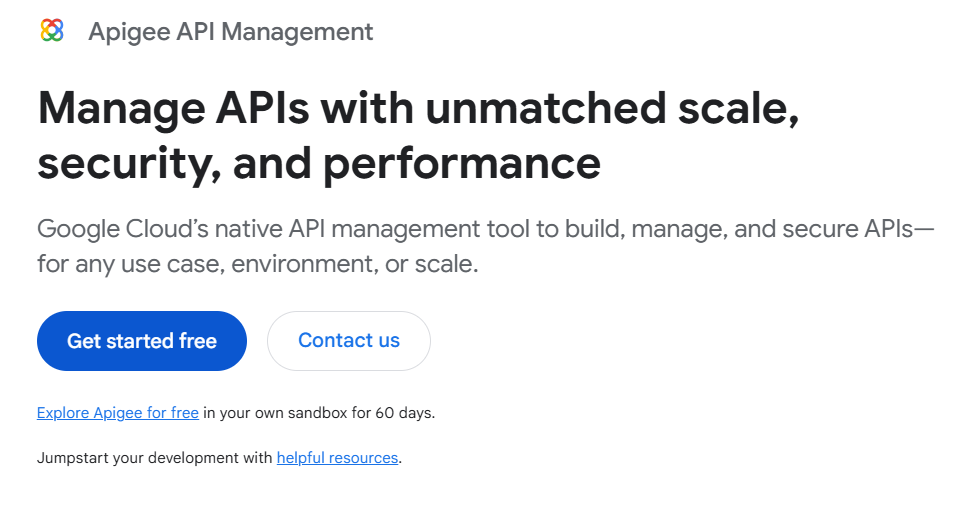
Apigee, part of Google Cloud, is a comprehensive API management platform that allows organizations to design, secure, deploy, and analyze APIs. It acts as a gateway, managing traffic, enforcing security, and providing insights into API usage, ultimately helping organizations optimize their digital ecosystems and create user-friendly products.
Key Features:
- API Lifecycle Management: Apigee supports the entire API lifecycle, from design and development to deployment, monitoring, and retirement.
- API Security: It offers robust security features like authentication, authorization, and policy enforcement to protect APIs and data.
- Traffic Management: Apigee manages API traffic with features like rate limiting, quotas, and caching to ensure optimal performance and availability.
- Developer Portal: Apigee provides a customizable developer portal to facilitate API discovery, registration, and usage.
- Analytics and Insights: It gathers and analyzes API usage data, providing valuable insights into performance, security, and developer engagement.
- Integration Capabilities: Apigee can connect to various backend systems, including legacy systems, and supports multiple cloud and hybrid environments.
- AI-powered insights: Apigee leverages AI and machine learning to provide deeper insights into API usage, identify potential issues, and optimize performance.
Best For:
- Organizations needing to expose data and services through APIs: Apigee is well-suited for companies that need to securely share data and functionality with internal and external developers and partners.
- Enterprises with complex API ecosystems: Apigee's comprehensive features and scalability make it ideal for managing large and complex API deployments.
- Companies looking to modernize legacy systems: Apigee can bridge the gap between old and new systems by creating APIs for legacy applications.
- Businesses focused on API monetization: Apigee offers features for creating different rate plans and managing revenue sharing for API usage.
Pros:
- Enhanced API Security: Robust security features protect APIs and sensitive data.
- Improved API Performance: Traffic management and optimization features ensure optimal performance and availability.
- Centralized Management: A single platform for managing all aspects of the API lifecycle.
- Scalability and Flexibility: Apigee can scale to meet the needs of growing businesses and complex environments.
- Developer-Friendly Experience: Customizable developer portal and SDK generation enhance the developer experience.
Cons:
- Complexity: Apigee's extensive feature set can be complex to learn and manage, especially for smaller teams or simpler API deployments.
- Cost: Apigee can be expensive, especially for organizations with high API traffic volume.
- Vendor Lock-in: Reliance on Google Cloud for Apigee can create some level of vendor lock-in.
4. AWS API Gateway
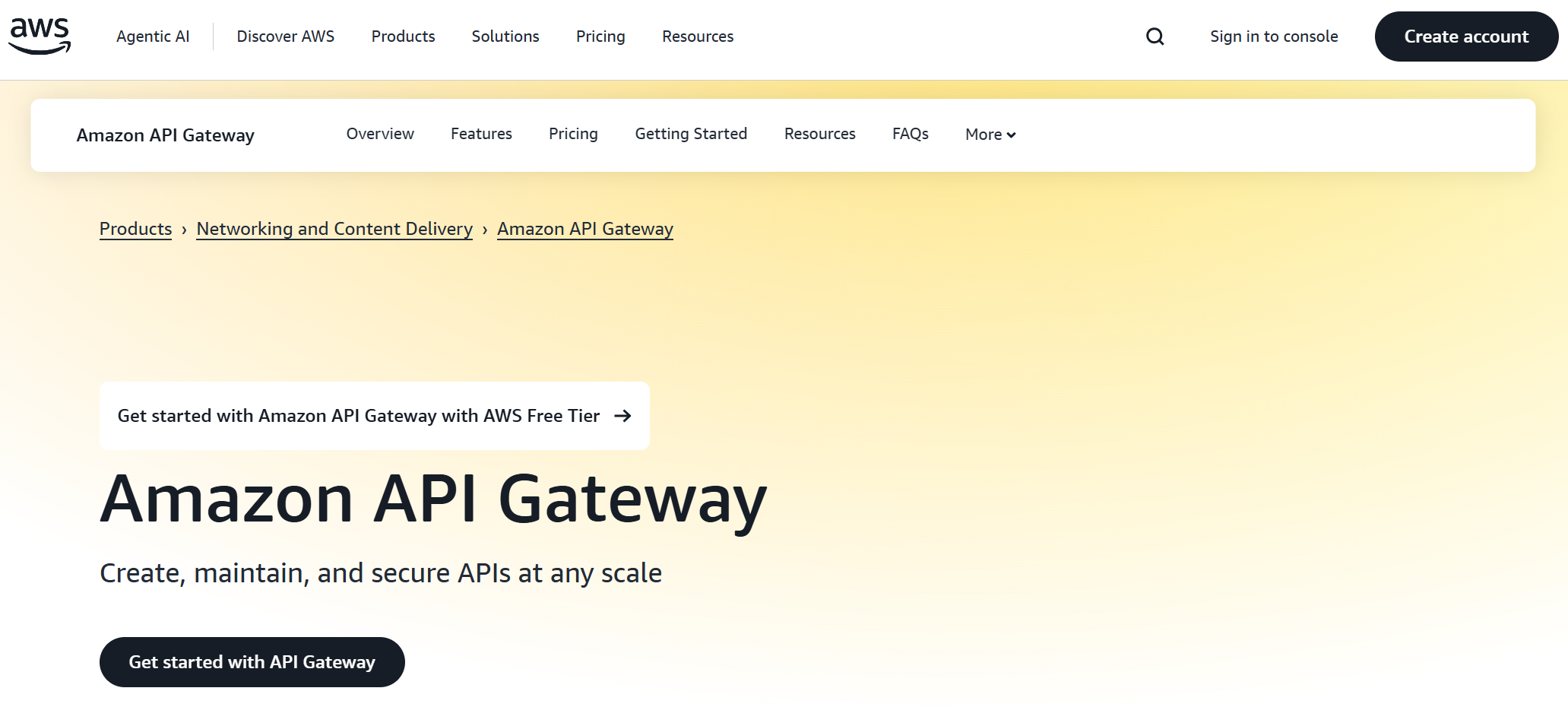
AWS API Gateway is a fully managed service that enables developers to create, publish, maintain, monitor, and secure APIs at any scale. It acts as a "front door" for applications to access backend services, such as AWS Lambda functions, Amazon EC2 instances, or other web services.
Key Features:
- API Creation and Management: Supports the creation of REST, HTTP, and WebSocket APIs.
- Security: Offers various authentication and authorization mechanisms, including AWS IAM, Lambda authorizers, Amazon Cognito user pools, and integration with AWS WAF for protection against common web exploits.
- Scalability and Performance: Handles traffic at any scale, provides caching for reduced latency, and supports canary deployments for safe rollouts.
- Monitoring and Logging: Integrates with Amazon CloudWatch for logging and monitoring API usage and execution, and with AWS X-Ray for performance analysis.
- Integration: Seamlessly integrates with other AWS services like AWS Lambda, Amazon S3, and Amazon DynamoDB.
- Custom Domain Names: Allows the use of custom domain names for APIs.
Best For:
- Serverless Architectures: Ideal for building serverless applications by exposing AWS Lambda functions as API endpoints.
- Microservices: Facilitates communication between microservices by providing a centralized entry point and routing capabilities.
- Mobile and Web Applications: Serves as a secure and scalable gateway for mobile and web clients to interact with backend services.
- Exposing Existing Services: Allows exposing existing internal services or data to external applications or partners through APIs.
Pros:
- Fully Managed: Reduces operational overhead as AWS handles infrastructure management.
- Scalability and Reliability: Designed for high availability and automatic scaling to handle varying traffic loads.
- Security Features: Provides robust security options for API protection.
- Integration with AWS Ecosystem: Seamlessly integrates with other AWS services.
- Cost-Effective: Pay-as-you-go pricing model, cost-effective for many use cases.
Cons:
- Complexity: Can have a steep learning curve, especially for advanced configurations.
- Pricing Complexity: Pricing can become complex with various tiers and features.
- Limited Customization: While flexible, some advanced customization might be limited compared to self-managed API gateways.
- Debugging Challenges: Debugging can sometimes be more challenging in a distributed serverless environment.
5. Tyk
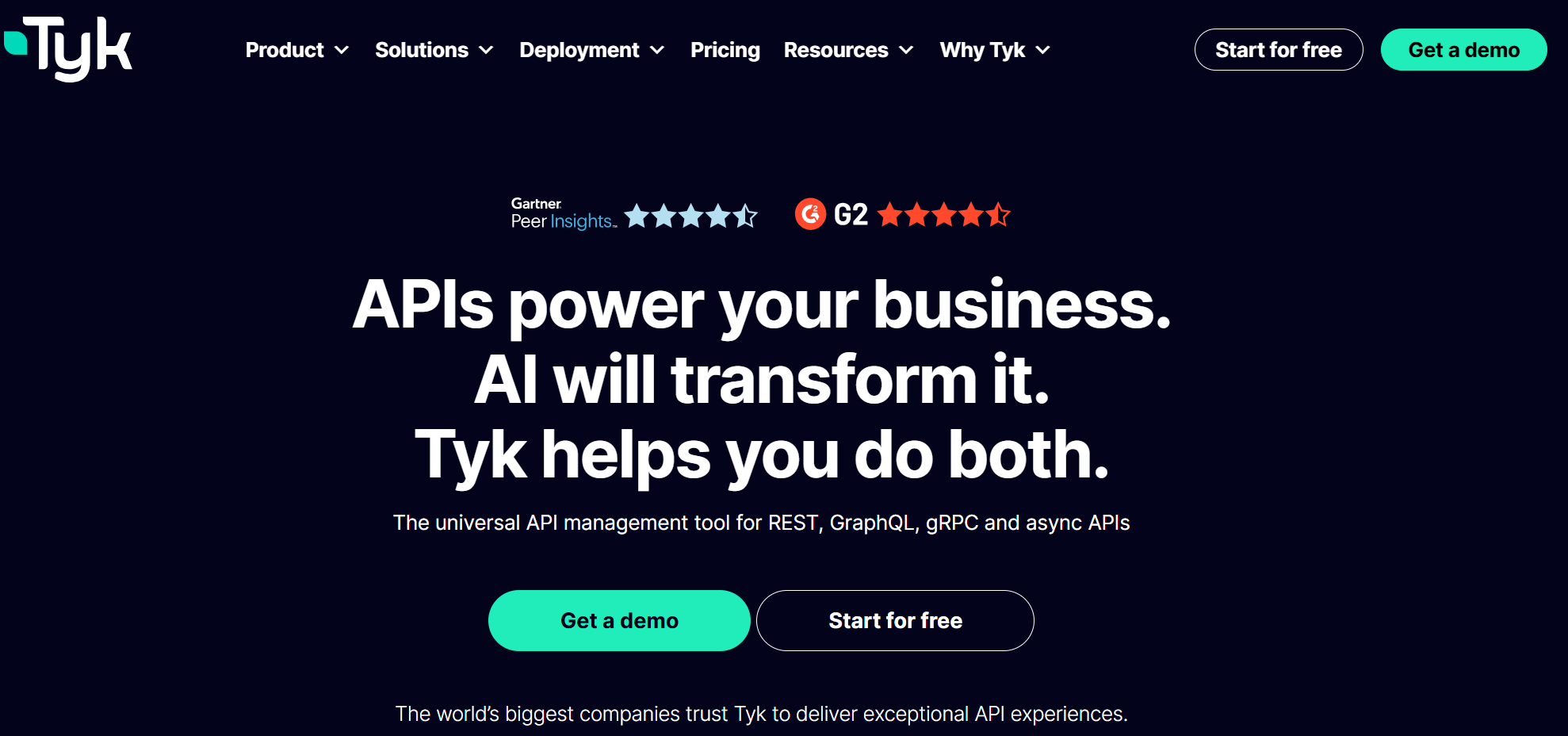
Tyk is a versatile API management platform and gateway, offering solutions for API creation, management, and security. It's known for its flexibility, performance, and focus on developer experience.
Key Features:
- API Gateway: Handles traffic routing, security, and request transformation.
- Developer Portal: Provides a self-service portal for API discovery, documentation, and access control.
- Security: Offers various authentication and authorization mechanisms, including OAuth 2.0, JWT, and more.
- Analytics: Provides insights into API usage, performance, and user behavior.
- Integration: Supports integration with various tools and technologies, including Kubernetes, GraphQL, and CI/CD pipelines.
- Customization: Offers extensive customization options for branding, policies, and integrations.
Best for:
- Organizations needing a robust API management solution with strong security features.
- Companies with complex API ecosystems and microservices architectures.
- Teams seeking a developer-friendly platform with a focus on user experience.
- Those needing a hybrid or multi-cloud deployment model.
Pros:
- Speed and Performance: Known for low latency and efficient traffic management.
- Flexibility and Customization: Offers a high degree of customization and integration options.
- Developer Experience: Provides a user-friendly developer portal and API lifecycle management tools.
- Security Features: Strong authentication and authorization capabilities.
- Open Source Option: Offers both open-source and enterprise versions.
Cons:
- Documentation: Some users find the documentation can be difficult to navigate or not entirely exhaustive.
- Setup: Can be tricky to set up on certain platforms.
- Error Messages: Some users have reported cryptic error messages in logs.
- Cost: The enterprise version may be expensive for smaller organizations.
6. MuleSoft Anypoint Platform

MuleSoft Anypoint Platform is a unified platform for designing, building, managing, and deploying APIs and integrations. It enables businesses to connect various applications, data, and devices, fostering seamless integration and digital transformation.
Key Features:
- API Design and Management: Allows for the creation, management, and governance of APIs, including versioning, security, and documentation.
- Integration Capabilities: Provides a wide range of connectors to various systems, databases, and applications, facilitating data and application integration.
- API and Application Orchestration: Enables the design of complex integration flows by orchestrating multiple APIs and applications.
- API and Application Monitoring: Offers monitoring capabilities for APIs and applications, providing insights into performance, usage, and potential issues.
- Security Features: Implements security measures for APIs and integrations, including authentication, authorization, and data encryption.
- Code Builder: Provides a visual development environment for building integrations with code generation and real-time validation.
Best For:
- Organizations looking to connect various applications, data sources, and systems.
- Businesses seeking to build and manage APIs for internal and external use.
- IT teams aiming to improve productivity and efficiency through automation and integration.
- Companies focused on digital transformation and creating engaging digital experiences.
Pros:
- Accelerated Delivery: Pre-built connectors and assets expedite integration projects.
- Scalability and Resilience: Built-in features for scalability and reliable operation of integrations.
- Reusability: Facilitates the reuse of APIs and integration components, reducing development time.
- Flexibility and Customization: Offers a flexible platform with a broad range of features and connectors.
- Unified Platform: Provides a single platform for API and integration development, management, and deployment.
Cons:
- Complexity: The platform can have a steep learning curve for beginners.
- Cost: Depending on the scale and complexity of the integration needs, costs can be significant.
- Licensing and Pricing: MuleSoft's pricing and licensing can be complex and may require careful planning.
7. Boomi API Management
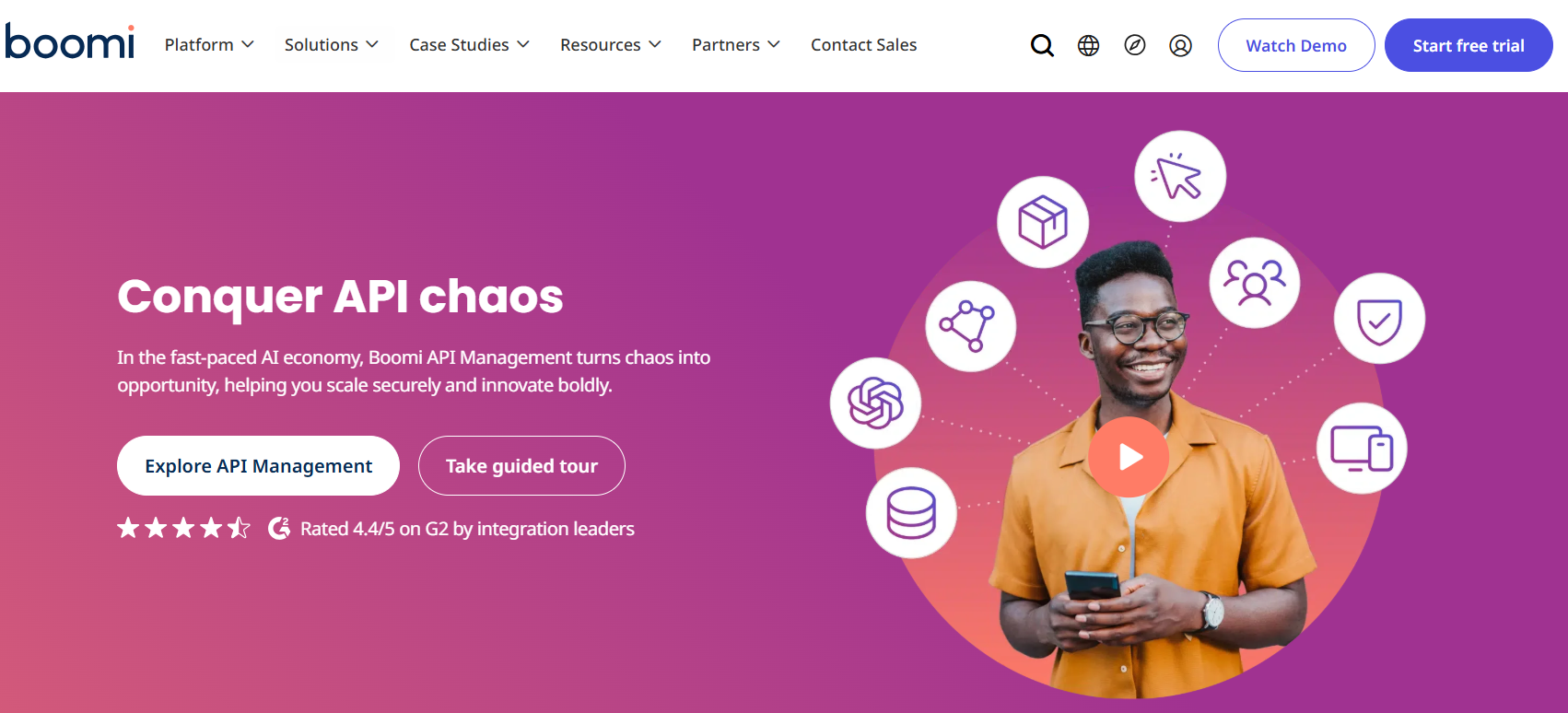
Boomi API Management is a unified, cloud-based solution designed to manage the entire lifecycle of Application Programming Interfaces (APIs). It provides tools for creating, publishing, securing, and monitoring APIs, enabling organizations to expose their data and services securely and efficiently to internal and external consumers.
Key Features:
- Full API Lifecycle Management: Supports API design, development, deployment, versioning, and retirement.
- API Gateway: Provides a central entry point for all APIs, enforcing security policies, managing traffic, and routing requests.
- Developer Portal: Offers a self-service platform for developers to discover, access, and test APIs, register applications, and manage API keys.
- Security and Governance: Includes features like authentication (e.g., OAuth 2.0, API Keys), authorization, traffic control, and policy enforcement.
- Monitoring and Analytics: Provides dashboards and tools to monitor API performance, usage, and health.
- Flexible Deployment: Supports deployment across various environments, including Boomi's platform, cloud environments, and third-party gateways.
- Low-Code/No-Code Capabilities: Integrates with Boomi's low-code integration platform, simplifying API creation and integration with other systems.
Best For:
- Need to expose internal data and services as APIs for various applications and partners.
- Require a unified platform to manage the entire API lifecycle.
- Are looking for a solution that integrates seamlessly with their existing Boomi integrations.
- Prioritize API security, governance, and performance monitoring.
Pros:
- Unified Platform: Centralized management of APIs and integrations.
- Ease of Use: User-friendly interface and low-code capabilities simplify API creation and management.
- Robust Security Features: Comprehensive security options for protecting APIs and data.
- Scalability: Designed to handle increasing API traffic and evolving business needs.
- Developer Engagement: Developer portal facilitates API adoption and collaboration.
Cons:
- Learning Curve: While user-friendly, understanding the full breadth of features might require some initial learning.
- Dependency on Boomi Ecosystem: Best leveraged within the broader Boomi platform, potentially less ideal for organizations not using other Boomi services.
8. Gloo Gateway
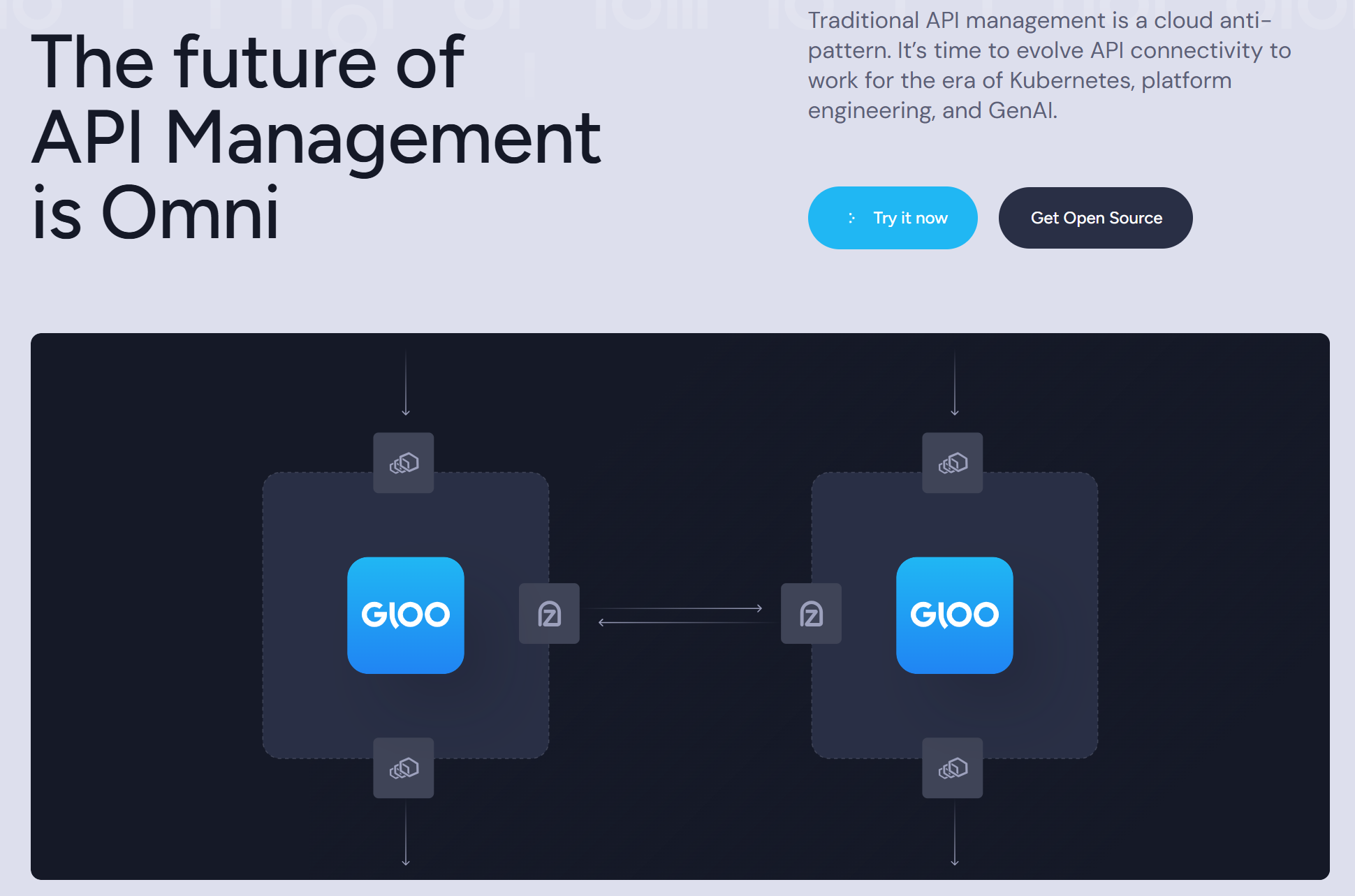
Gloo Gateway is a cloud-native API gateway and ingress controller built on Envoy, designed to manage and secure traffic to Kubernetes-based applications. It offers advanced features like function-level routing, discovery, and integration with service meshes, making it suitable for both modern and legacy applications.
Key Features:
- Function-level routing: Enables fine-grained routing based on function names and other criteria.
- Service discovery: Automatically discovers and manages services within a Kubernetes cluster.
- Advanced traffic management: Provides features like load balancing, retries, circuit breaking, and traffic shaping.
- Security features: Includes Web Application Firewall (WAF), external authentication and authorization, rate limiting, and API key management.
- Integration with service meshes: Seamlessly integrates with Istio and other service meshes.
- GitOps and CI/CD integration: Uses Kubernetes Custom Resources (CRs) for declarative, API-driven configuration, allowing easy integration into existing workflows.
- AI Gateway features: Offers features like streaming prompt guardrails, tracing, and function/tool calling for AI applications.
Best For:
- Kubernetes-native applications: Gloo Gateway is designed to work natively with Kubernetes, making it ideal for modern cloud-native deployments.
- Microservices and serverless architectures: Its function-level routing and service discovery capabilities are well-suited for managing complex microservices and serverless functions.
- Organizations transitioning to microservices: Gloo Gateway can help gradually migrate from legacy systems to microservices by providing a bridge between the two.
- API security and management: Offers robust security features to protect APIs and control access.
- Organizations adopting AI applications: Features like streaming prompt guardrails and function calling make it a strong choice for AI-powered applications.
Pros:
- High performance and scalability: Built on Envoy, Gloo Gateway offers high performance and can scale to handle significant traffic.
- Flexible deployment options: Can be deployed on various cloud and on-premises environments.
- Strong security features: Provides robust security measures for protecting APIs and applications.
- Easy integration with GitOps and CI/CD pipelines: Uses Kubernetes CRs for declarative configuration, enabling seamless integration into existing workflows.
- Open source foundation with commercial options: Provides a solid open-source base with commercial support and additional features available.
Cons:
- Potential complexity: Advanced features may require a steeper learning curve.
- Performance can vary: Performance can depend on deployment configuration and specific use cases.
- Less mature AI-specific capabilities: While Gloo AI Gateway is evolving, its AI-specific features may not be as mature as other specialized AI gateways.
9. Gravitee.io
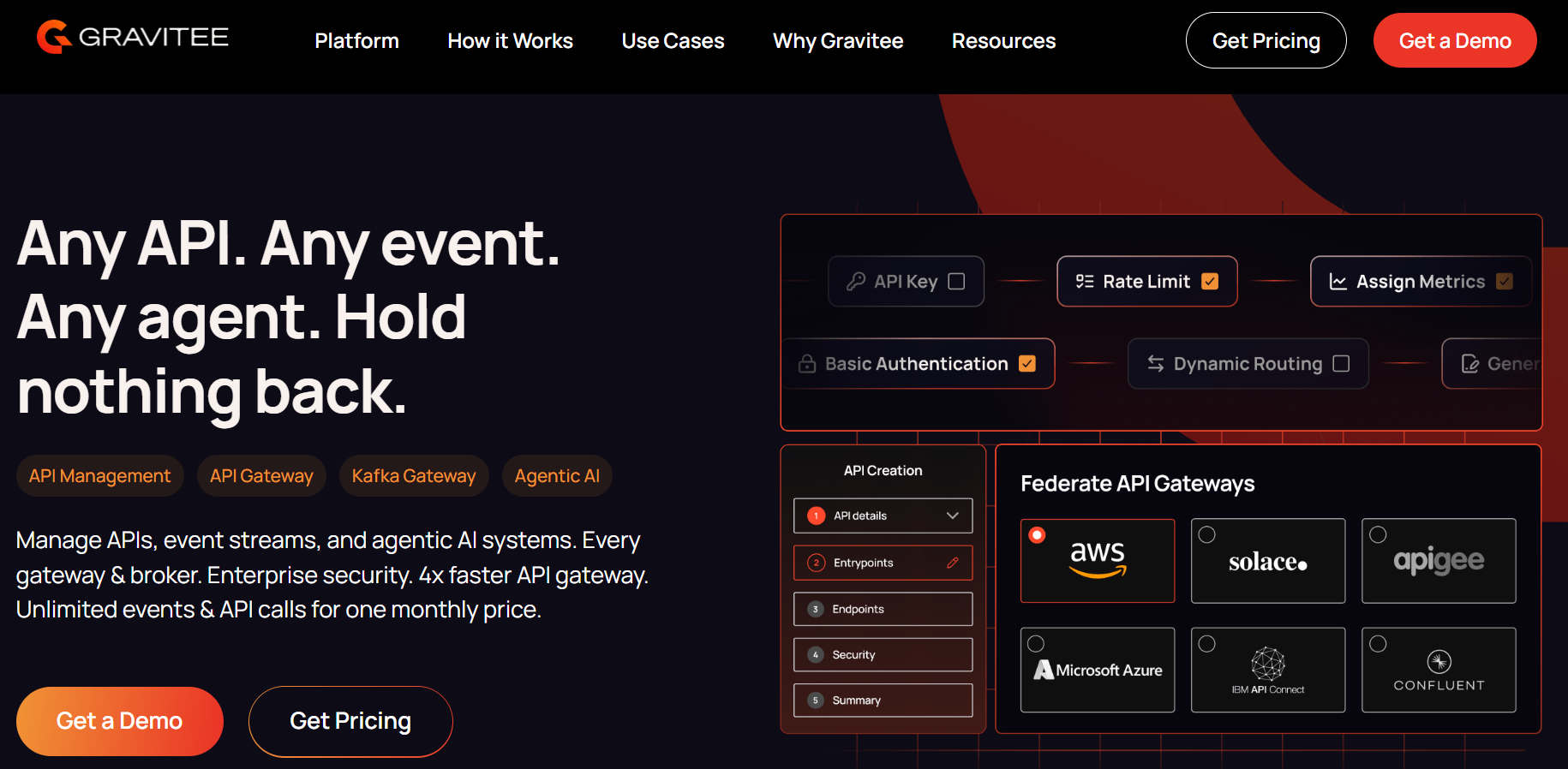
Gravitee API Gateway is an open-source API management platform that helps organizations design, secure, publish, and analyze their APIs. It offers a comprehensive suite of tools for managing both synchronous and asynchronous APIs, including API gateways, access management, and API design capabilities. It's particularly well-suited for organizations seeking to manage the full API lifecycle, enforce governance rules, and scale their API ecosystem efficiently.
Key Features:
- API Gateway: A core component for managing API traffic, securing access, and enforcing policies.
- Access Management: Provides tools for authentication, authorization, and user management.
- API Designer: Enables users to design, document, and publish APIs, including support for both synchronous and asynchronous APIs.
- Developer Portal: Facilitates API discovery, subscription management, and documentation access for developers.
- Monitoring and Analytics: Offers insights into API performance, usage, and security events.
- Policy Enforcement: Allows for the implementation of various security and traffic management policies without coding.
- Event-Native API Gateway: Supports protocols like Kafka and MQTT, making it suitable for event-driven architectures.
Best For:
- Organizations needing a flexible and scalable API management solution.
- Teams managing both traditional and event-driven APIs.
- Enterprises seeking to streamline API lifecycle management.
- Companies wanting to empower non-technical users with API design tools.
- Organizations requiring robust security and governance features.
Pros:
- Open Source: Offers flexibility and cost-effectiveness.
- Comprehensive API Lifecycle Management: Covers design, deployment, monitoring, and security.
- Scalability and Performance: Designed to handle high traffic and complex API ecosystems.
- Low-Code/No-Code Configuration: Simplifies policy creation and API management.
- Strong Security Features: Includes authentication, authorization, and rate limiting.
Cons:
- Complexity: While offering low-code options, managing a large-scale API infrastructure can still be complex.
- Community Size: Compared to some larger vendors, the Gravitee.io community might be smaller, potentially affecting the speed of issue resolution or the availability of certain resources.
- Learning Curve: Requires some time investment to fully understand and utilize all features.
10. Apidog
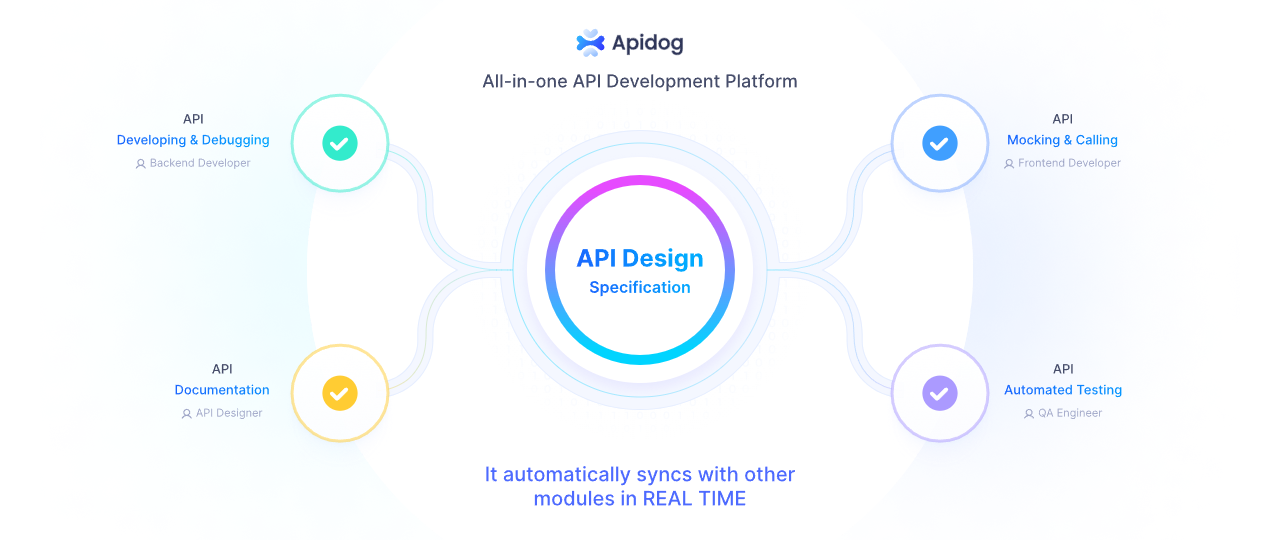
Apidog is an all-in-one collaborative platform for API development, combining API design, documentation, testing, and debugging. It simplifies the API lifecycle, offering a streamlined workflow for teams. Key features include a unified interface for design, testing, and documentation, real-time collaboration, and automated testing capabilities. Apidog is best for teams seeking a comprehensive and efficient tool to manage all aspects of API development in one place.
Key Features:
- Unified Interface: Apidog provides a single platform for designing, documenting, testing, and debugging APIs.
- Real-time Collaboration: Multiple team members can work together on the same API project simultaneously.
- Automated Testing: Features like automated API testing and integration testing help streamline the testing process and improve efficiency.
- API Documentation: Apidog allows for the creation of interactive API documentation, which can be shared with team members or external users.
- Mock Servers: The platform includes mock servers that enable teams to test API endpoints before the backend is fully developed.
- Environment Management: Easily switch between different API environments (development, testing, production) for testing purposes.
- Import/Export: Supports importing and exporting API definitions in various formats, including OpenAPI/Swagger.
Pros:
- Efficiency: Streamlines the API development workflow by combining multiple tools into one platform.
- Collaboration: Real-time collaboration features enable teams to work together effectively.
- Automation: Automated testing features reduce manual effort and improve testing speed and accuracy.
- Documentation: Easy generation of interactive API documentation helps with onboarding and reference.
- Cost-effective: Apidog offers a free plan and competitive pricing for larger teams and projects.
Cons:
- Learning Curve: While intuitive, new users may need some time to get familiar with all the features.
- Limited Customization: Compared to some specialized tools, Apidog's customization options might be limited.
Key Takeaways (Before You Build Your Next API)
Choosing the right API gateway depends on your team’s priorities—whether it’s performance, scalability, cost, or ease of use. From open-source options to fully managed enterprise solutions, each tool on this list brings its own strengths. Evaluate your current architecture, growth plans, and integration needs to find the best fit. And don’t forget—tools like Apidog can complement your API gateway by helping you test, document, and debug your APIs with ease.
